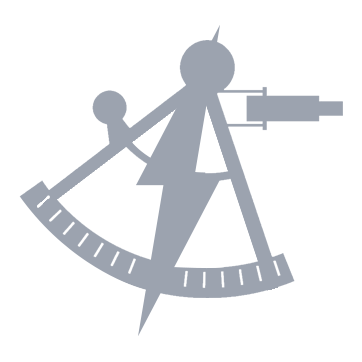Summary
Captain Xavier Vance (born April 18, 2351, in Texarkana, Texas) is a highly decorated Starfleet officer known for serving during the Dominion War and his subsequent leadership in peacetime operations. He quickly rose through the ranks during the war, eventually becoming Chief Tactical Officer aboard the USS Keogh. Vance earned the nickname “Lucky Vance” after surviving severe injuries during the Battle of Hawkins Pass. He later served as the First Officer on the USS Ehrenfest, where his leadership resulted in numerous successful first contacts and charting of new sectors. Vance is known for his tactical acumen but has since focused on developing his diplomatic and emotional intelligence in response to the challenges of a post-war Starfleet. He is a father to two adult children, Alden and Maeve, both attending Starfleet Academy, and has maintained close ties with his family despite his demanding career.
Appearance
Vance is 5’11” (180 cm) tall and has a heavy build. Weighing 218 pounds (99 kg), he carries his frame easily with grace despite his size. His salt-and-pepper hair is kept short, often paired with a neatly trimmed beard that conceals a scar running down the left side of his face—a lasting mark from the same incident that took his arm and leg. His dark brown, nearly black eyes hold a quiet intensity, revealing little of the pain he endures daily.
His left arm and leg are prosthetic, the result of a catastrophic injury sustained in the line of duty. Though the artificial limbs ache constantly, he rarely lets it show, masking his discomfort with practiced ease. Only a slight limp betrays him on his worst days.
Personality
Captain Vance is known for his keen tactical acumen. He is a veteran of the Dominion War, and with that, he still carries the emotional and physical scars that come with two years of intense combat. Years of counseling have helped him overcome PTSD. Because of this, he has embraced an anti-Kirk philosophy: you can do everything right and still fail.
While a strict disciplinarian, he is not rigid about it. He holds his crew to high standards but does not mindlessly follow Starfleet regulations at the cost of common sense. He trusts in his instincts as much as in protocol and is willing to take calculated risks when the situation demands. This earned him the moniker “Lucky Vance,” originally meant as a joke about his improbable survivals but later as a grudging respect for his uncanny ability to read the flow of battle.
Unlike the image of a distant or harsh commander, Vance is charismatic and affable when the moment allows. He enjoys camaraderie with his officers, has a wry sense of humor, and is prone to moments of warmth, especially when sharing stories over a drink or meal. While he values respect and professionalism on duty, he does not mistake formality for competence. What matters to him is a crew that can think, adapt, and fight when it counts.
He trusts his instincts and experience to make split-second calls when pushed into battle. It might seem reckless to an outsider, but it’s a calculated risk. He understands the cost of war and does not seek conflict, but he believes in hitting hard and fast to end it on his terms when it is unavoidable. When provoked into combat, he will offer no quarter until eliminating the immediate threat. To his enemies, this might be seen as ruthless—Klingon-like.
Vance is not a flawless commander. His willingness to bend the rules sometimes draws scrutiny from those who prefer strict adherence to regulations, and his reliance on instinct can frustrate officers who value precision over intuition. But those who serve under him quickly learn that his loyalty is unwavering. He takes care of his crew, pushes them to be their best, and stands with them when things go wrong. He does not demand perfection, only courage, competence, and the willingness to rise to the occasion.
History
Early Life:
Xavier Vance was raised on a 50-acre farm outside Texarkana in East Texas. His parents, Christopher and Linda, were members of the Reclaimers, a group of 21st-century fundamentalists. Rejecting modern technology like replicators and transporters, the Reclaimers prided themselves on their self-sufficiency.
While most people on Earth had given up traditional farming practices due to the introduction of replicators, the Reclaimers continued to grow crops and raise livestock. Their artisans and farmers would trade with the nearby cities of Texarkana and New Boston for tools and other things they could not make themselves. However, there was considerable friction between the Reclaimers and the outside communities due to their consumption of meat, which was viewed as unenlightened and cruel.
Unlike most people living on Earth, who had abandoned traditional
By Federation standards, the Vances were poor. They had no replicators, formal schooling, or integration into modern society. But they had something else—land, family, and hard-earned skills.
Vance was the third of four children, growing up alongside his older brothers, Chris Jr. and David, and his younger sister, Michelle. Like all the Vance children, he was homeschooled, but their education was more practical than academic. Linda did her best, but physics and literature didn’t put food on the table. The real lessons came from the land—learning to mend fences, rotate crops, tend livestock, and survive.
But Vance wanted more.
Dreams Beyond the Horizon
After the farmwork was done at night, he would lose himself in books, Treasure Island, Moby-Dick, and Dune—stories of grand adventures across oceans and distant stars. He imagined himself at the helm of a starship, standing where explorers and captains had stood before him. Or perhaps ordering a broadside from the bridge of a grand ship-of-the-line against pirates or the detestable French.
Then, at sixteen, he read Jonathan Archer’s autobiography. From that point on, he wanted something more than a farm of his own; he wanted to travel the stars. He knew he had to leave from that moment to be a Starfleet officer.
But dreams didn’t change reality. He had no transcripts or formal education and barely enough knowledge to pass a basic aptitude test. Starfleet Academy required years of rigorous schooling, and he had nothing but the farm’s lessons and a handful of books.
Still, he tried.
At seventeen, Vance took the Starfleet Academy entrance exam and failed spectacularly. His mother, though sympathetic, was relieved. His father, however, was quietly heartbroken. Christopher had spent his entire life of hard graft under the sun with no real change in sight. He didn’t want that for his children, least of all for Vance—the only one who dared to dream beyond the farm.
So, Christopher chose to help his son reach for the stars.
The Hardest Road
Galin Thurgood was a retired Academy professor who had settled in Texarkana. He initially agreed to tutor Vance for free, but Christopher was too proud to accept charity. Eventually they struck a deal: one bag of fresh produce a week, and Vance would handle the upkeep of Thurgood’s lawn and home.
For three grueling years, Vance split his time between farmwork and study. By day, he was a farmer, plowing fields, fixing irrigation lines, and milking cows. By night, Vance was a student, memorizing equations and dissecting star charts. He struggled with subjects he should have learned a decade earlier. Some nights, he never slept, finishing homework to head straight to the barn before dawn.
He failed more practice exams than he could count. There were times when the doubt was so strong that he almost gave up. But, then there were the fields, that seemd to stretch on forever. The same fields his father and his father before him broke their backs under to til. If he stayed, that was his future,
In 2371, at age twenty, Vance retook the Starfleet entrance exam. This time, he passed.
Barely.
But that was enough and Vance was accepted into the Academy’s class of 2375. On the day he left for the Academy his father shook his hand, not as his son, but as a man, pride in his eyes. His mother cried and held him longer than necessicary, and at last Vance turned and walked down that gravel road. At the gate he looked back and his parents were still standing where he had left them in embrace.
Starfleet Academy:
Vance worked long days and nights for three years to earn a place at the Academy. But once accepted, he found himself burned out. The newfound distractions of living alone only made matters worse, and Vance struggled to keep up academically. Already behind his peers in education, he spent his entire time at the Academy on academic probation.
Vance chose to major in Security/Tactical Sciences, figuring it would be one of the easier paths through the Academy. While he coasted through his general education courses, he struggled to stay engaged and often did just enough to pass. However, Vance showed a natural aptitude that set him apart in strategy and tactics. Growing up on that East Texas farm, he had strength and endurance that many of his classmates lacked. Thus, the physical aspects of his training came easily to him.
Vance quickly earned a reputation as an infamous prankster. In the final week of his sophmore year he reprogrammed the Acadamy’s replicators with help from fellow cadet Nicholas Ryder to only dispense pecan pie. In another incident he snuck a live chicken into the the comodant’s office, where the bird did what birds do and left a mess everywhere. As a punishment, Vance spent the remainder of the semester scrubbing the office with a toothbrush. These pranks made him popular with the student body and infamous with the faculty and staff.
Vance made many friendships at the Acadmey despite his unconventional upbringing. Thaddius Young, a fellow human cadet, and Malin Prin, a mischievous Bajoran, became two of his closest friends, often involved in his pranks. Thaddius tried to be the voice of reason and usually failed to keep Vance in check. Malin, however, enthusiastically encouraged his more reckless tendencies.
At the Academy, Vance also met Malinda Davis, who would one day become his wife. They met in Alien Languages class, a course Vance was struggling with. Spotting an opportunity to spend time with the beautiful and intelligent Malinda, he convinced her to tutor him—something he genuinely needed, though she never suspected his ulterior motive. At the end of the semester, he asked her out after barely scraping by with a passing grade on the final. She was reluctant at first, but to his surprise, she accepted.
The conflict was with Domnion was escalating, and after the losses to the Klingon Empire Starfleet was depserite for officer. To meet this demand the Academy condensed its training and educaion programs. Vance was already struggling with the course work, and he would have likely been expelled with Malinda’s tutoring and Starfleet’s need for officers.
On May 16, 2374, Vance graduated last in his class with a Security & Tactical Sciences degree. Assignements were based on Academy standing and by the time it got down to him only Talius V remained, a ground infantry assignemnt. As it turned out it would be one of the war’s bloodiest battlefields.
The Dominion War:
Talius V
Assigned
Ensign Vance was assgined to Delta Company, 1st Battalion, 15th Regiment of the 92nd Security Division as a junior platoon leader. The transion from the luxurey of life on Earth to the trenches of frontline combat was a jarring experience. Many of his replacments cumbled under the terror, Vance chose to challange it, accpeting a fatilistic mindset, accepting that he was already dead.
Talius V, a planet along the Cardassian border, was a vital supply and logistics hub. The planet’s rocky and tree-covered terrain made assaults on Jem’hadar positions a deadly scramble, while the enemy with their shrouding capabilities could appear out of nowhere. The constant attacks quickly forged Vance and his platoon into a battle-hardened team.
On June 28, 2374, Delta Company received orders to capture Hill 34. It was a worthless chunk of rock that offered neither side any real strategic advantage, but they fought for it because the enemy was there. All night long, Starfleet runabouts and other small craft rained down micro-photon torpedoes, lighting up the night sky in brilliant flashes of antimatter explosions.
At dawn, the order came. The company commander led the charge, convinced the bombardment had broken the enemy’s will. Vance’s 3rd Platoon advanced up the steepest section, using jagged boulders and scorched tree trunks as cover. The climb was eerily quiet. No resistance. No return fire.
Vance had studied the battles of old—Peleliu and Iwo Jima. He knew better than to trust a battlefield left conveniently empty. Vance held his troops back and ordered them into cover just below the summit. He scanned the ridgeline from his position, searching for movement for anything out of place.
Emboldened by their lack of resistance, the rest of the company burst on top of Hill 34, only for the Jem’hadar, who had hidden within underground bunkers, to emerge, the purple beams of their polaron rifles cutting through the early morning fog. Dozens of Starfleet soldiers fell in the initial volley unprotected. It would have been a slaughter had not been for 3rd Platoon returning fire.
With chaos all around him, Vance jumped into action. With Jem’Hadar fire tearing through Delta Company’s ranks he left the cover the boulder he was hiding behind and started dragging the wounded to safety. With both the company commander the and the executive officer dead Vance became the senior most officer still standing. He rallied the remaing troops, medevaced the wounded, and pulled Delta Company back to a more defensable location along the ridgeline.
Recognizing the risk of encirclement, Vance repositioned 2nd Platoon, into a flanking maneuver to counter any Jem’Hadar attempts to outmaneuver their line. As the day wore on, Delta Company held its ground. Outnumbered and as cuaslties grew and supplies dwindled Vance moved across the line keeping moral up.
As dusk approached, reinforcements from Alpha and Charlie Companies arrived, finally allowing Starfleet forces to dislodge the entrenched Jem’Hadar. When the fighting subsided, Hill 34 lay in Starfleet’s hands—an unremarkable patch of scorched Earth won at a terrible cost.
For Vance the battle proved that he had what it took to be a soldier in this hellish war. He had proven to himself and his command that he was a capable leader.
After the battle of Hill 34, the 15th Regiment was pulled from the front lines to regroup and recover. However, their respite was brief. A month later, Talius V fell to the Dominion, and Starfleet to abandoned the planet. The regiment along with Delta Company was sent to reinfoce Outpost Delta-9, another planet beseiged by the Dominon.
Outpost Delta-9
Founded in 2267, Outpost Delta-9 began as a human colony, mining the rich pergium and tritanium deposits. Initially geologically stable, the decades of mining upended the planet’s tectonic balance causing frequent earthquakes, and violent volcanic erruptions that spewed ash and toxic gassed into the the atmosphere that left the planet almost uninhaitable. Most settlers abandoned the Delta-9, although a few thousand remained, continuing to extract valuable resources despite the growing dangers.
Due to its location in the Talarian Corridor, a narrow passageway located between the Cardassian Union and the Talarian Republic, Delta-9 was strategically important for both sides. In early 2374, the Starfleet Corps of Engineers established an observation and listening post to monitor enemy fleet movements.
Redeplyed to the planet Vance, and Delta Company were reassigned to Outpost Delta-9, tasked with holding the pergium mine near the small village of Helen’s Grove. Skirmishes with Jem’Hadar and Cardassian ground forces were frequent, keeping the unit in a constant state of alert. Despite the dangers, Vance experienced a rare luxury: sleeping in a real bed each night and eating hot, replicated meals three times a day—a stark contrast to the grueling conditions he had endured on the front lines.
In December, as the Bloody Year of 2374 drew to a close, a tragic late-night raid claimed the life of the company XO. In the aftermath, Vance was promoted to Executive Officer and took command of 1st Platoon.
In early 2375, Delta Company was ordered to abandon Helen’s Grove, relocating to a series of hastily dug foxholes and trenches overlooking a key mountain pass. The pass was the last natural barrier between Dominion-held territory and the remaining Federation-controlled zones on Delta-9. They had to hold “The Pass,” and in doing so Command knew that would come with a high butcher’s bill.
The Battle of Hawkins Pass raged for three months, claiming countles lives on both sides. Artillery barrages, trench raids, and brutal hand-to-hand combat became a macbre way of life for those stationed on the front line. The relative comfort of Vance’s early days on Delta-9 with a bed to sleep in and hot replicated meals had become a distant memory, replaced by deadly horrors of “The Pass.” Mud-soaked uniforms, cold, hard ground, and Starfleet rations were all Delta Company had to look forward to.
Day after day, night after night, the next attack hung around their necks like a noose. Most endured, but a few; despite their training, they broke from the hellish reality they found themselves in. Vance would discover crewmen curled in their foxholes, shaking and muttering, hollow-eyed from the sleepless nights and constant threat of death. Others took more desperate measures—self-inflicted wounds, like a phaser shot to the foot, anything to escape from the unrelenting horrors of war.
But there was no escape. Hawkins Pass had to hold.
After three grueling months on the front lines, now Lieutenant (jg) Vance led a patrol into Dominion-held territory to gather intelligence. The patrol was uneventful until they were nearly back within their own lines. Vance inadvertently led his team into a Houdini Mine in a rare moment of lowered vigilance. The explosion tore through the patrol, killing three soldiers and severely injuring Vance.
Medics on Delta-9 stabilized Vance before transferring him to a medical ship bound for Starbase 21. En route to the starbase, Vance’s heart stopped three times.
At the starbase the doctors discovered that his left arm and leg were too badly damaged. Due to prolonged lack of proper bloodflow both limbs were deemed unsalvageable and were aputatedd. Additionally, shrapnel had severely damaged his lungs, necessitating bio-synthetic replacements.
Vance spent four months in rehabilitation, adapting to his prosthetic limbs and undergoing extensive physical therapy. Despite the constant pain that the doctors assured him was only in his head her pushed through. He was determined to return to his unit. By late 2375, the doctors signed off on him and rejoined Starfleet in time for the Second Battle of Chin’toka.
USS Keogh
While recovering on Starbase 21, Delta-9 fell to the Dominion. His old regiment had suffered such high casualties that it was disbanded, with the surviving members absorbed into other units. In mid-2375, now a full Lieutenant, he was assigned to the USS Keogh, an aging Miranda-class starship, as the Chief Tactical Officer.
The transition from frontline ground combat to space combat was a difficult adjustment. Vance was haunted by his survival when so many others did not. He felt guilty for enjoying the relative luxury of the starship while his friends were fighting and dying in the mud, but his injuries had made that life impossible. He rarely slept, and when he did, he would wake up at night screaming into the darkness, sometimes in a pile on the floor, his blankets wrapped around him, heart racing.
He refused dermal regeneration for a scar on his face, a wound that could have been erased in seconds. When questioned, he dismissed it as unimportant, but in truth, it was a reminder—one he refused to let go of. A lesson in blood and pain: never let your guard down. Some of the crew whispered about it, but no one asked.
He never said anything to anyone. He didn’t want to appear weak, and he started to resort to various pharmaceutical means to calm his mind and ensure dreamless nights. One of the Ferengi, Drok, who worked as a waiter in Quark’s bar on Deep Space Nine, provided him with the illegal drugs.
Vance hid his deteriorating mental state behind work. He drilled the officers under him like a drill instructor, preparing them for trench warfare that they would never see. They resented him for this, yet Keogh’s security department became one of the best in the fleet.
However, his service on the ship was short-lived. The Keogh was one of many ships in the Federation fleet at the Second Battle of Chin’toka. Like almost all Alliance ships at Chin’toka, the Keogh was disabled by the Breen energy-dampening weapon. Vance helped lead evacuation efforts as the ship was torn apart by enemy fire. He jettisoned his escape pod at the last moment, just before the warp core went critical, tearing the ship apart.
The USS Somme rescued Vance three days later, and he and many of the Keogh’s crew were transported back to Earth. After a debriefing, they were all split up, and Vance was reassigned to the USS Saint-Mihiel. Vance spent the rest of the war with the 1st Fleet, protecting Earth from future attacks that never came.
USS Saint-Mihiel
Unlike the Keogh, the Centaur-class USS Saint-Mihiel was far from the frontlines. Its days were filled with patrols, readiness drills, and the constant preperaton for an attack that never came. For Vance, the shift from brutal frontline servicie, to comfort and stability of home defense was jarring. With no end to the war in sight, a different fear crept in: the fear of being left alone with his thoughts.
He was close enough to Earth to visit home for the first time since the Battle of Hawkins Pass. His mother, who had never approved of his decision to join Starfleet, was the one to break through his hardened exterior. Through his forced stoicism, she saw how he carried himself like a man still in the trenches. She refused to let him brush off his pain, and after one brutal conversation, he admitted haltingly, bitterly, to what he had become.
Forced to confront his drug use and the demons clawing at his mind, Vance sought out a private counselor in Colorado. It was a long process, but he but the same effort into his drug addiction as he had with his physical therapy. Little by little, he began to face the trauma, to work through the nightmares rather than suppress them. Eventually, he confided in his captain and the Saint-Mihiel’s Chief Medical Officer. Instead of reprimanding him, they helped him find a path forward. The CMO still prescribed a sleep aid, but this time, they monitored it, and there were no more illicit dealings in the shadows. His mental state slowly improved, but he would never be the same. War had taken a piece of his humanity—his innocence. This war had given him scars, visable and hidden. These were trophies every war survivor from the dawn of time earned and no one wanted.
Post War
Lieutenant Xavier Vance continued to serve aboard the USS Saint-Mihiel for another year. The ship, assigned to the First Fleet, working to help rebuild the Federation. Supply runs were a monotunous and constant reality. And to see those colonies that were rebuilding after brutal invaisons by the Dominon dredged up old nightmares from his time in the trenches.
The Saint-Mihiel’s assignment to the First Fleet meant frequent returns to Earth. This allwowed Vance to reconnect with Malinda Davis, his old flame from the Academy. A chance meeting in San Francis lead to coffee then several dates, and then a relationship.
In 2376, Malinda moved to the Saint-Mihiel as chief science officer to be near Vance. They had little to do on that ship. He was the tactical officer on milk runs, and she was a science officer on a ship that never did science. In their bordom their love grew. On January 19, 2377, they were married on Vance’s parent’s farm in front of the very barn he would milk the cows in his youth.
Starbase 198
Soon Malinda became pregnant, and at the same time Vance was promoted lieutenant commander. With the new pip on his collar Vance started looking for command opportunies to help him in his goal to become a starship commander. He found it on Starbase 198 where the strategic operations officer poistion had recently come avalible.
For Malinda, this was a step backwards in her career if she wanted to keep the family together. She resigned her role as chief science officer aboard the Saint-Mihiel to take demotion position as head of Archaeology and Anthropology on SB198. Officially, it was her choice. Starfleet hadn’t forced her to transfer, but the reality was that family came first.
She had never been one to dwell on rank, but she felt the difference immediately. On the Saint-Mihiel, she ran staff meetings, set research priorities, and liaised directly with the captain. On SB198, she was one voice among many. The first time she submitted a research proposal, she received it back with a note from the chief science officer, her new boss, asking her to “refine the scope to align with the station’s priorities.”
She didn’t respond immediately; she stared at the message until the screen dimmed from inactivity. On the Saint-Mihiel, she set the department’s priorities. Now, she had to ask permission.
At first, she tried to brush off her misgivings. Orders were orders, right? But deep down, she knew her husband could have refused the promotion. She had to sacrificed her ambition and career for the family, and Vance ha givedn up nothing.
On the surface, life on SB198 was peaceful. The Gorn and Tholians remained distant, and the Vances presented themselves as a happy couple. But within their quarters, tensions simmered; Malinda resentful, Vance defensive.
Following the birth of their son Aiden in November 2377, the couple transitioned into family life – both with the joys and challenges of being parents. Aiden’s presence served as a distraction, temporaraly relieving tensions. Adjusting to life as parents, they grew closer together, and it wasn’t long after their son was born that Malinda learned they were expecting again. However, deep down, this newfound stability simply masked Malinda’s resentment toward Vance.
In 2384, while the Romulan Empire fell into chaos, and a divided Federation debated how to respond to the moral crisis created by the impending supernova, the Vance household was no less fractured. The simmering resentment between Vance and Malinda boiled over when Malinda was not selected for an open Chief Science Officer position. This was the last straw. What had been an unexpressed tension had now become an open conflict.
Their fights became public knowledge, with heated arguments spilling beyond closed doors. More than once, security officers had been called to their quarters. Neither could ignore that embarrassment. Vance could deftly navigate a battlefield, but was compleatly inept when it came to his failing marriage. All the tactical prowess in the uninverse couldn’t help him now only futher cementing the rift between them.
In August of 2384, the breaking point had arrived. Malinda requested a transfer to the USS Effingham to lead its Anthropology department. She sought a fresh start far from the fighting and hurt feelings. She took Aiden and Maeve with her, leaving Vance alone in their empty quarters.
Left with little reason to stay, Vance buried himself in duty. When an opening for the first officer aboard the USS Ehrenfest became available, he took it without hesitation. It was a new challenge, a way to outrun the ghosts of his failed marriage.
USS Ehrenfest
The Ehrenfest, a Sovereign-class, was assigned to a seven-year deep-space mission into the Gamma Quadrant under Captain Elara Vos. Far removed from the Federation it was an opportunity for Vance to run away from his divorce. Vance’s divorce was finalized on the day the ship departed Deep Space Nine for the Gamma Quadrant.
Nine years after the Dominion War, Starfleet turned its attention back to the Gamma Quadrant. While Odo’s return to the Great Link offered hope, few believed the Founders had truly changed. The Dominion was still a threat. Starfleet needed to know if they were rebuilding. Was there a lingering threat now or into the future?
But Starfleet’s prime directive remained: to explore strange new worlds, to seek out new life and new civilizations. The quadrant full of new uncharted space. Yet, despite the scientific discovery there was a real reason for them to be there: vigilance. This was an opportunity to keeo an eye on their old enemy, the Dominion.
Vance, however, took on a new role as if he were a fish in water. While the duties were vastly different from any of his past assignments, the leadership aspects of the job weren’t too different from those of a Platoon Ensign.
He still scanned a room for exits and measured people by their ability to stay calm under pressure. Depsite his demons he found life aboard the Ehrenfesthe found himself laughing, joking, and enjoying the routine of shipboard life. He felt at home among a crew. The Friday night poker games with the senior staff became a tradition. In the gym, he sparred with junior officers, in wresting and boxing. But more than anything this helped quite the mind. A distraction from the screams of agony from those distant trenches lightyears and a decade ago,
After four years of countless first contacts and exploring hundreds of star systems, Captain Vos promoted Vance to full commander. The rank changed nothing, but he quietly appreciated the gesture. It was another step forward, bringing him closer to his ultimate goal.
After seven years in the Gamma Quadrant, it was time to return home. The Ehrenfest had ventured farther into the Gamma Quadrant than any other Starfleet vessel.
For Vance, the end of the mission was inevitable, but that didn’t mean it was easy. He had built a life aboard the Ehrenfest, found purpose in its journey, and felt at home among a crew for the first time in years. As they set course for the wormhole Vance approached their homcoming with trepidation. He hadn’t seen his kids in seven years. That was a guilt that gnawed at him. He had chosen to run away from responsibility and he felt nothing but shame. On the other hand this crew had become family. He would miss them dearly.
USS Salinas
Returning from deep space in 2391, Vance transferred to the USS Salinas, a California-class starship, continuing his career as a first officer. The Salinas was a step down from the pride of the fleet, the Sovereign class, but it offered something far more critical—proximity. Based out of Starbase 21, where his ex-wife Malinda served as station commander, it allowed him to reconnect with his children after years of distance.
Though Salinas lacked the prestige of his previous assignments, Vance embraced the role. It was a smaller ship with a tighter crew and a different pace than the high-profile deep-space operations. He was already familiar with the work, as the vessel served many of the same roles as his old ship, the USS Saint-Maihil. Though second contacts were rarer now, he enjoyed them when they happened.
But despite the quieter life aboard the Salinas and the time he cherished with his children, Vance couldn’t shake the itch to do more. He had always been a man of action, driven by a need to serve on the front lines of history. Though he had learned patience in the Gamma Quardran, he knew he couldn’t stay on the sidelines forever. He anxiously waited, the perfect assignment that would keep him in his kid’s life. When it came, he jumped on it. The USS Loveland was that opportunity.
USS Loveland
When Vance took command of the Akira-class USS Loveland, he found himself in an ideal position—close enough to Starbase 21 to remain a presence in his children’s lives while leading a ship at the heart of regional security along the Cardassian and Tholian borders. It was the perfect balance of responsibility, action, and family, all within reach.
The Loveland quickly became one of the most active ships in the region. Vance set a high bar for tactical readiness but knew diplomacy was just as important. His wartime experience made him decisive under pressure and bold but never reckless. His first major challenge came when a rogue Cardassian splinter group, the True Way, attempted to destabilize Federation-Cardassian relations. Through swift tactical responses and careful negotiation, Vance helped prevent a more significant conflict while exposing hidden True Way operatives in a Cardassian colony.
By 2396, the Tholians had grown increasingly aggressive in their territorial claims, particularly near the contested regions of the Azure Nebula. Vance led several tense standoffs with Tholian vessels. He masterfully navigated these events with diplomacy and aggression, preventing open war. He always prepared to fight but was never the one to start it.
In early 2397, the Loveland was among the first vessels to respond to a distress call from the Cardassian colony of Telva III, where an unexpected plasma storm had struck. Coordinating with Cardassian forces, Vance and his crew worked to evacuate the colony. Ths joint effort saved thousands of lives and earned Vance the appreciation of the Cardassian government. Because of his actions, he was awarded commendations from Starfleet and the Cardassians.
The center seat was hard and lonely, with extended hours and constant demands keeping him away from his children, who had grown into teenagers and were preparing to leave for Starfleet Academy. His relationship with Malinda remained cordial but distant. He leaned on his crew for camaraderie, particularly his first officer, Commander Elias Rourke. He was a pragmatic strategist with a dry wit who often served as Vance’s sounding board under challenging situations. Vance also developed a bond with his chief engineer, Lieutenant Commander Elizabeth Kyle, who delighted in challenging him while mentoring Ensign Shawn Taylor, who was under her command. That mentoring had resulted in a three-month tumultuous relationship that had exploded worse than Vance’s’.
By 2399, reports of Breen activity along the Tholian border put the region on edge. The Loveland routinely patrolled the area, monitoring Breen’s activity and attempting to ease tensions through diplomacy. In mid-2400, what began as a routine mission turned into a vicious ambush. The Breen attacked without warning, forcing Vance and his crew into a fierce battle. The Loveland was badly damaged, but, they drove off the invaders and limped back into Federation space.
The Loveland was also a leader in a multi-fleet operation to disrupt an emerging Orion Syndicate smuggling cartel milking Cardassian to Tholian space trade routes. Vance led a combined task force to find a major Syndicate base in the Hekaras Corridor. This disrupted Syndicate operations in the region for the time being.
USS Valhalla
In 2402, Captain Aoife MacKenzie stepped away from Starfleet to marry her executive officer. Starfleet offered Vance command of the Valhalla, placing him at the head of Valhalla Division, a two-ship task force that included the USS Sentinel. With his kids grown and at Starfleet Academy, Vance accepted the posting.
One of his first acts as commanding officer was to bring Commander Elizabeth Kyle aboard as his first officer. He had come to respect her while serving on the Loveland. Leading two ships demanded a strategic mindset and the ability to coordinate multi-ship operations effectively, a new challenge Vance faced with his characteristic pragmatism.
With the Valhalla and Sentinel under his command, Vance entered a new phase of leadership.
Service Record
| Date | Position | Posting | Rank |
|---|---|---|---|
| 2371 - 2374 | Cadet | Starfleet Academy |
 Cadet Junior Grade Cadet Junior Grade |
| 2374 | Platoon Leader | Talius V |
 Ensign Ensign |
| 2374 | Platoon Leader | Outpost Delta-9 |
 Ensign Ensign |
| 2374 - 2375 | Company XO | Outpost Delta-9 |
 Lieutenant Junior Grade Lieutenant Junior Grade |
| 2375 | Chief of Security and Tactical | USS Keogh |
 Lieutenant Lieutenant |
| 2375 - 2377 | Chief of Security and Tactical | USS Saint-Mihiel |
 Lieutenant Lieutenant |
| 2377 - 2384 | Strategic Operations Officer | Starbase 198 |
 Lieutenant Commander Lieutenant Commander |
| 2384 - 2388 | Frist Officer | USS Ehrenfest |
 Lieutenant Commander Lieutenant Commander |
| 2388 - 2391 | First Officer | USS Ehrenfest |
 Commander Commander |
| 2391 - 2395 | First Officer | USS Salinas |
 Commander Commander |
| 2395 - 2402 | Commanding Officer | USS Loveland |
 Captain Captain |
| 2402 - Present | Commanding Officer | USS Valhalla |
 Captain Captain |

 Bravo Fleet
Bravo Fleet






